Scientists are turning to ants, bees — and even slime mould — to help build better cities
IT lives on the forest floor but “the blob” could be the key to changing all of our everyday lives.
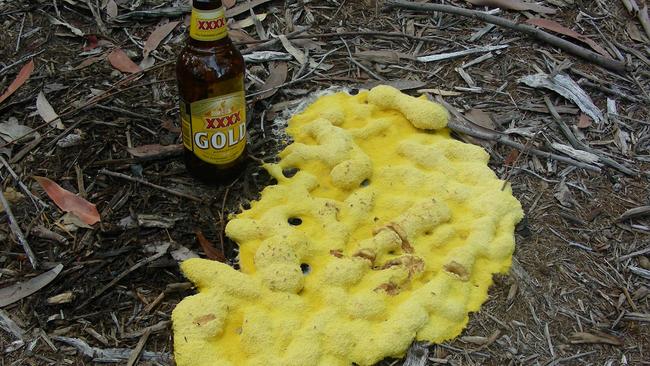
WERE you stuck in a jam on the way to work this morning? Is your train always full? If so, you may want to ponder this.
Could you have got to work quicker if the road or railway had been designed not by a human, at vast expense, but by an ant or even a single-celled sticky blob of slime?
It sounds ridiculous but researchers are looking at how ants, bees and even slime mould build their own transport networks to see if they could do a better job than we do.
In some cases, slime mould has already redesigned human transport systems into more efficient networks that are quicker to get around.
With Australia undergoing an infrastructure boom — Sydney and Melbourne alone are spending more than $50 billion on new motorways and rail links — should we be seeking inspiration from amoebas?
Slime mould, an organism which can usually be found slithering along forest floors putrefying mushrooms, doesn’t have many friends in this world but one of them is Professor Tanya Latty from Sydney University.
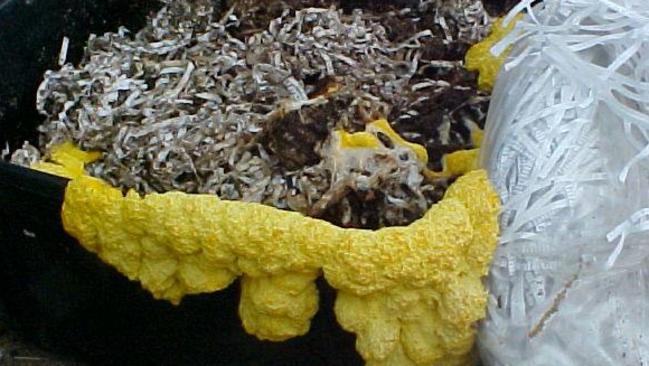
Last week, the entomologist gave a talk at the university’s Sydney Science Forum about slime mould’s role as one of nature’s best engineers.
But even she acknowledges slime mould’s downsides.
“It’s fundamentally weird and alien,” she tells news.com.au. “If you’ve seen the movie The Blob, it’s pretty much what slime mould is.
“It’s a big yellow mucusy thing which I like to think of as self-organised snot.”
But the single-celled beast, this particular variety of which is known as physarum polycephalum (literally the “many headed slime”), has some redeeming features. Like many of us, it likes nothing more than to eat oats in the morning and, as Prof Latty says, “slime mould is the poster child of resilience. Nothing can stop it.”

ITALIAN CITIES GO DARK
What wasn’t resilient was the Italian power network in the winter of 2003. A tree fell on a single power line in the Alps and caused nationwide chaos.
The power that should have gone through the felled power line instead went to other lines, overloading them in the process and plunging 56 million people into darkness for 24 hours.
If ants or slime had plotted where the power lines should be built, the blackout may never have happened.
“People who live in cities are extremely dependent on a whole network of critical infrastructure systems for everything we do. But when they go wrong, it’s a really big problem,” Prof Latty said.
Not so for the Argentine ant. This little critter lives in multiple nests and between them builds invisible insect roads created by dabbing the route with pheromones.
What’s more, ants can often work out the mathematically shortest route between various points, something humans can struggle with.
“Why would an ant need an efficient transport system?” says Prof Latty. “Because when it’s above ground things can eat it or it can dry out in the sun, so if you have ridiculously long meandering trails that ant is increasing the probability it will get killed.”
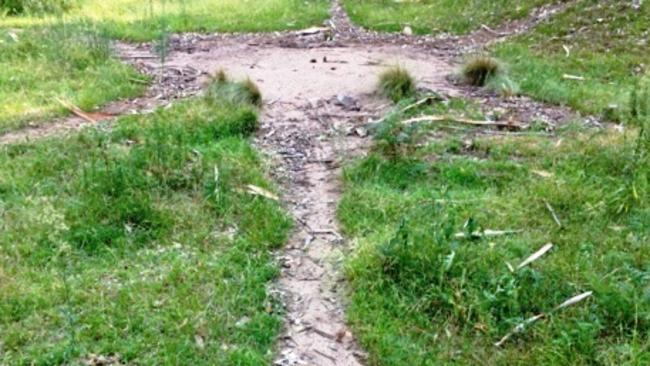
ANT MOTORWAYS
But while the routes are short they are also not very permanent. If something blocks their path, the Argentine ants have to find a new way to connect their nests.
The Australian meat ant has another solution. These ferocious insects build ant motorways so large you can see them on Google Maps. The industrious ants cut down grass and clear paths so they can access food quicker without having to clamber through undergrowth.
But unlike their Argentinian cousins, the meat ant has another trick up its sleeve. It builds multiple routes between its nest and food sources so if one is blocked, say by a falling tree, the ants can follow another.
Already, the meat ant is more resilient than the Italian power network.
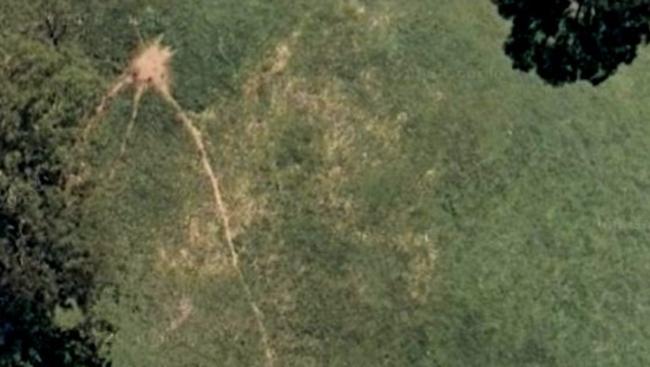
SLIMY SOLUTIONS
“The problem of connecting up lots of points is what human engineers have to do the whole time, so with the Sydney rail network you need to connect up all the stations in a way that makes some kind of sense,” says Prof Latty.
But it’s the sticky slime mound which is the most ingenious when it comes to building transport systems.
In 2010, Japanese researcher Toshioyuki Nakagaki, of Hokkaido University set a blob of this brainless slime a challenge. He wanted to see if it could find its way through a small maze.
At both ends he put a pile of oats and then waited to see where its sticky veiny tentacles took it.
“First slime mould does what you expect a blob to do,” says Prof Latty. “It sloshes around but over time some parts of the mould get these much thicker tubes but it’s also getting rid of tubes in redundant parts of the maze.
“If you give the slime mould 24 hours by and large it will have found the shortest path.”
It proved, Prof Nakagaki told the UK’s Telegraph, that humans were not the only beings with the ability to process complex information.
The slime was then let loose on a map of Tokyo with a big pile of oats for the CBD and smaller piles for suburbs and railway stations.
The mould fanned out with its creeping yellow tubes visibly connecting the oat piles. The pattern it created amazed the academics.
“What it ended up with was almost identical to the map of the actual Tokyo metro system so it seems whatever the slime mould is doing is what human engineers are trying to do.
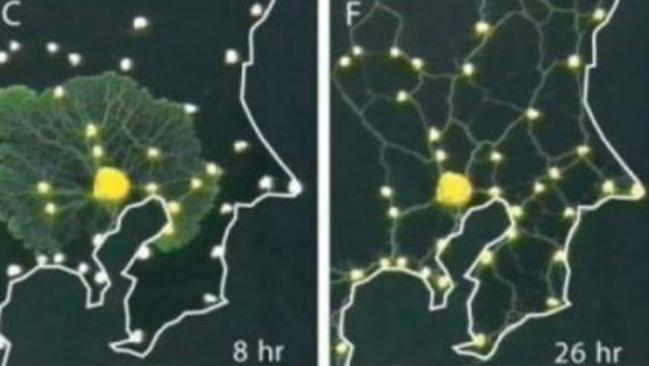
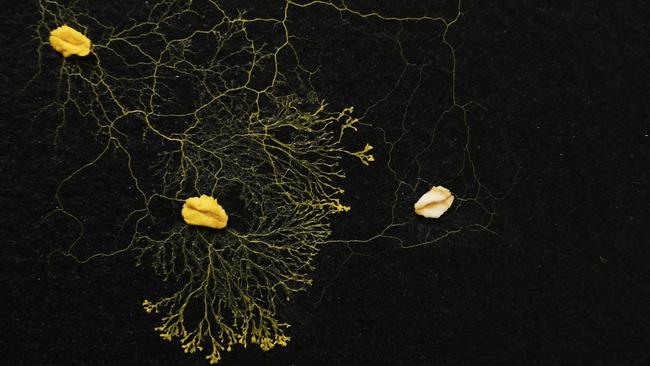
“The difference is humans have massive brains, access to computers and hundreds of years of history designing networks and the slime mould is basically just moving mucus,” she says.
The slime has been sent on other trips. On a map of Canada, it faithfully recreated the country’s motorway network.
But on a map of the US, the slime created several different path ways between the major American cities suggesting the freeway network could be far more efficient.
Prof Latty, says it been on her “to-do list” to set the slime free on a map of Sydney or Melbourne to see if the train network is really the most efficient and find out where new lines should go.
“We wouldn’t normally think of slime mould as being able to help us build better transport systems yet there are scientists working on this right now.”
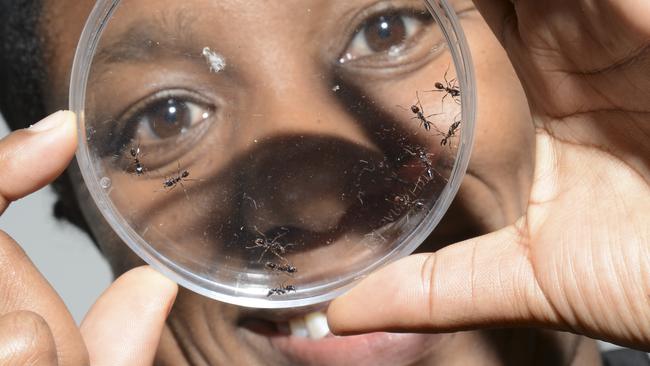
Equally, we could learn a lot from the robustness of the meat ants interlinked highways on the forest floor.
But she cautions against leaving all our major infrastructure decisions up to ants and neon yellow snot.
“You wouldn’t literally put slime mould on a map and invest money there because there are all sorts of other things humans need to take into account such as closeness of schools and hospitals,” Prof Latty said.
“We should look at what ants and slime mould are doing and draw inspiration from that and use our big brains to tweak those solutions into something more workable.”
Nevertheless, if your trip to work was a breeze today maybe it’s because the route you took would have been the same one a blob of slime would have chosen if it was in charge.
TRUCK CARRYING EELS OVERTURNS, COATING HIGHWAY IN OREGON, US
benedict.brook@news.com.au




